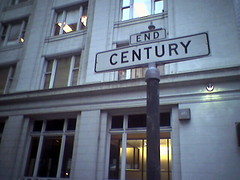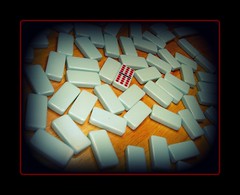 Take a look around. Look at the people in your office, at the desk next to you. Look into the faces of the people who you pass in the corridor. They look the same, right? The same faces have greeted you year in, year out.
Take a look around. Look at the people in your office, at the desk next to you. Look into the faces of the people who you pass in the corridor. They look the same, right? The same faces have greeted you year in, year out.
Well, get ready, because the workplace is transforming, and it is happening right under your nose.
Those peppy Gen Y kids who were brought into the business to inject some life and energy are moving up. That’s right, they have been steadily building their experience, lobbying the line management and pushing through the KPIs in the yearly 360 degree reviews … and guess what? They are now making business decisions. Yes, indeed, Gen Y are reaching the management level, and working the matrix — and they will bring a new style and a new approach to your business. This will transform the way that we all work. Indeed, it has to.
 And one of the biggest transformations will be right there on the desk in front of you. That locked down desktop that has served you well for the last couple of years will soon be replaced. Gradually that sparse Desktop will be replaced by a series of icons and widgets … and horror of all horrors, you will find the work computer looks increasingly like your kids PC (or dare I say it, a Mac!). The new management will be prising the dead-hand of the IT group off the controls and installing new applications and adding new links. There will be Twitter and Facebook and LinkedIn and Friendfeed. There will be various shades of SaaS (software as a service) delivering on-demand enterprise scale business processes and systems that you can reach no matter where you are, all courtesy of “the cloud”. Sure there will be the in-house enterprise systems … but they too will play nicely with whatever you need them to. After all, it’s not your Dad’s company anymore.
And one of the biggest transformations will be right there on the desk in front of you. That locked down desktop that has served you well for the last couple of years will soon be replaced. Gradually that sparse Desktop will be replaced by a series of icons and widgets … and horror of all horrors, you will find the work computer looks increasingly like your kids PC (or dare I say it, a Mac!). The new management will be prising the dead-hand of the IT group off the controls and installing new applications and adding new links. There will be Twitter and Facebook and LinkedIn and Friendfeed. There will be various shades of SaaS (software as a service) delivering on-demand enterprise scale business processes and systems that you can reach no matter where you are, all courtesy of “the cloud”. Sure there will be the in-house enterprise systems … but they too will play nicely with whatever you need them to. After all, it’s not your Dad’s company anymore.
 But while this sounds like a madhouse of change for the sake of change, stop again, for a moment. Get up and walk down the corridor. Your workplace is about to undergo a large-scale transformation … millions of baby boomer workers are set to reach retirement age in the next few years, and the next wave of Gen Y knowledge workers are stepping in to replace them. It’s not that the systems, processes and business models are being changed on a whim – they are being changed because the people who DO the work are changing. Like any living organism, the organisation is also transforming … shedding its skin in a kafka-esque tribute to the new age.
But while this sounds like a madhouse of change for the sake of change, stop again, for a moment. Get up and walk down the corridor. Your workplace is about to undergo a large-scale transformation … millions of baby boomer workers are set to reach retirement age in the next few years, and the next wave of Gen Y knowledge workers are stepping in to replace them. It’s not that the systems, processes and business models are being changed on a whim – they are being changed because the people who DO the work are changing. Like any living organism, the organisation is also transforming … shedding its skin in a kafka-esque tribute to the new age.
And while these new systems and processes may raise your eyebrows and your blood pressure, there is actually some as-yet unrealised business value in platforms such as Twitter and Facebook. Aaron Strout and Joe Cascio clearly explain where micro-blogging platforms such as Twitter can deliver business value:
- Emergency broadcast system
- Knowledge management
- Training
- Expert identification
- Seeing the connectors
- Inclusion of external stakeholders
All of these elements will be of increasing strategic importance as the composition of the global workforce turns over on itself. And while there will be issues and questions around security, scalability and so on, they pale into insignificance against the larger challenges of global competition, attracting talent and delivering value to customers. And who knows, the widespread adoption of these tools may well inadvertently fullfil the promise of the Cluetrain Manifesto — "humanising" the brands and businesses that we come in contact with every day.
It really is not my Dad’s company.
Update: Marigo Raftopoulos has a great post encouraging us to understand this business transformation as a change from economies of scale to economies of (I presume personal/professional and social) networks.
 This week, a one day executive forum on Enterprise 2.0 – is being run here in Sydney. Building on Ross Dawson’s ongoing exploration and analysis of the application of web technologies to organisational structures and processes, it combines panels, case studies and workshops in what sounds like a fluid and energetic day.
This week, a one day executive forum on Enterprise 2.0 – is being run here in Sydney. Building on Ross Dawson’s ongoing exploration and analysis of the application of web technologies to organisational structures and processes, it combines panels, case studies and workshops in what sounds like a fluid and energetic day.





